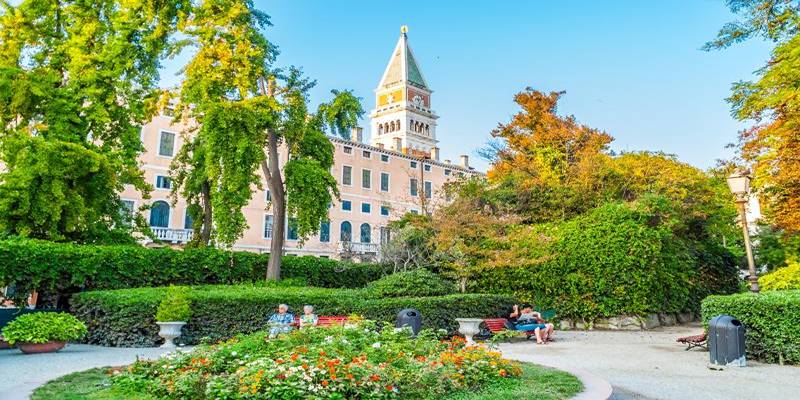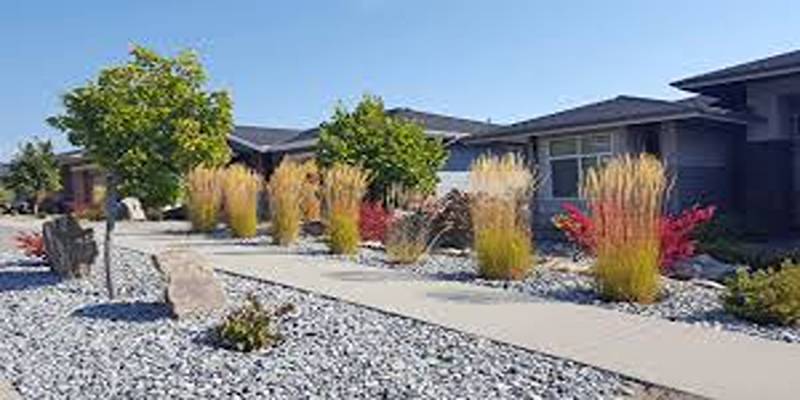Venice is best known for its canals, Renaissance architecture, and artistic heritage. However, hidden among its winding alleys and over 100 islands are pockets of calm where nature thrives—offering locals and travelers a much-needed break from the crowded calli and vaporetto routes. These parks and gardens provide fresh air, scenic beauty, and a contrast to the stone and water landscape of the city.
Although the city’s geography limits the amount of green space, what Venice lacks in size, it compensates for in charm and history. The following seven public parks and gardens represent the finest spots to unwind in this floating city.
1. Giardini della Biennale
The Giardini della Biennale, located in the Castello district, is one of Venice’s most famous green spaces. Established during the Napoleonic era, it is home to the Venice Biennale art exhibitions and features pavilions representing different countries.
When not in use for events, the park serves as a tranquil oasis with tree-lined avenues, shaded benches, and sculptures dotting the landscape. Visitors can relax under the canopies of pine and plane trees while watching boats drift by along the waterfront. Its location near the eastern tip of the main island also makes it less crowded than areas closer to San Marco, making it a peaceful stop during sightseeing.
2. Parco delle Rimembranze (Sant’Elena)
Connected to the Giardini, this larger and more open green space sits at the far eastern end of Venice. Parco delle Rimembranze, or “Remembrance Park,” was created in honor of fallen soldiers and now serves as a multi-purpose recreational area.
Families, joggers, and dog walkers favor this park for its broad grassy areas, walking paths, and playgrounds. It is also ideal for a quiet picnic away from the tourist bustle. The surrounding lagoon views and relative solitude offer a side of Venice that many visitors miss. Despite being part of the city, it feels like a park in a seaside town—calm, breezy, and naturally picturesque.
3. Giardini Reali (Royal Gardens)

Located just behind Piazza San Marco and alongside the Grand Canal, the Giardini Reali offers a surprising amount of greenery in the heart of Venice’s most visited area. Created in the early 19th century for the royal family, the gardens were recently restored and reopened to the public.
The carefully manicured hedges, elegant pergolas, and blooming flowerbeds provide an excellent backdrop for photography and short walks. It’s a welcome escape from the crowds of San Marco and ideal for taking a break without straying far from central attractions. Its accessibility and neat design make it one of the most refined parks in the city.
4. Giardino Papadopoli
Near Piazzale Roma and the Santa Lucia train station lies Giardino Papadopoli, one of the few green spaces on Venice’s western side. This 19th-century garden was originally a private estate but is now a public park enclosed by walls and hedges. Despite its modest size, it features a surprisingly wide variety of plant life and offers pockets of tranquility even near busy streets. Locals often bring their children here or use the space for quiet midday breaks.
Shaded by trees and featuring winding paths and small fountains, this compact park is a favorite rest spot for travelers arriving or departing the city. Its proximity to transport hubs doesn’t diminish its peaceful atmosphere, especially in the morning hours. It’s a great place to stretch your legs after a train ride or relax while waiting for a bus or vaporetto.
5. Garden of Palazzo Soranzo Cappello
This lesser-known gem lies in the Santa Croce district and surrounds a 16th-century palace that now houses the Venetian Heritage Authority. Although access may be limited depending on the day, it is generally open to the public and worth seeking out.
The garden blends wild growth with classic Venetian design—featuring citrus trees, roses, and ornamental elements that reflect the city’s aristocratic past. As it is tucked away from the main routes, it is rarely crowded, offering a serene and intimate experience. This garden is beautiful for those interested in Venetian history and architecture, as it combines both with natural beauty.
6. Giardino Mistico (Mystical Garden) at the Church of the Gesuiti

Tucked behind the grand Church of Santa Maria Assunta (Gesuiti), the Giardino Mistico is a recently reopened green area that served as a spiritual retreat space for Jesuit monks. It is now a public garden managed by local environmental groups.
The space emphasizes natural vegetation and ecological balance. Rather than being a formal park, it reflects a more organic layout, with fruit trees, aromatic herbs, and simple seating. Visitors appreciate its tranquil environment and proximity to the Cannaregio canals. It’s not just a park but also a living lesson in sustainable gardening within an urban setting.
7. Garden of Ca’ Morosini (Campo Santo Stefano)
Although smaller in size, the public garden behind the Ca’ Morosini complex at Campo Santo Stefano provides a breath of fresh air in one of Venice’s cultural hubs. Surrounded by historic buildings and art galleries, this small lawn is often overlooked.
It is more of a quiet patch of green with a few trees and benches than a fully developed park, but its strategic location makes it invaluable. Locals use it as a meeting point, and tourists rest here between visits to nearby landmarks like the Accademia Gallery or Palazzo Franchetti. While simple, its presence adds charm and balance to one of the busiest open squares in the city.
Conclusion
The best public parks and gardens in Venice serve as more than simple places to sit—they are essential to the city’s rhythm. Whether enjoying views of the lagoon, strolling under centuries-old trees, or simply finding a quiet place to reflect, these spaces offer a side of Venice that goes beyond museums and gondolas.
Each location on this list brings something different: history, elegance, local charm, or hidden tranquility. Taken together, they show that even in a city built on water and stone, nature still finds a way to flourish—and so can the traveler.












